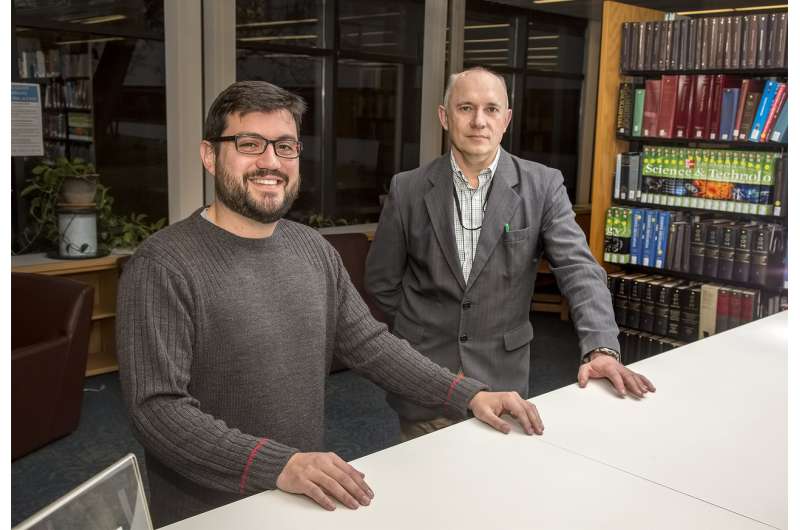Chirping is welcome in birds but not in fusion devices—scientists show that weak turbulence makes chirping more likely

Birds do it and so do doughnut-shaped fusion facilities called "tokamaks." But tokamak chirping— a rapidly changing frequency wave that can be far above what the human ear can detect—is hardly welcome to researchers who seek to bring the fusion that powers the sun and stars to Earth. Such chirping signals a loss of heat that can slow fusion reactions, a loss that has long puzzled scientists.
Compounding the puzzle is that some tokamaks chirp more frequently than others. For example, chirps have commonly occurred in the National Spherical Torus Experiment Upgrade (NSTX-U) at the U.S. Department of Energy's (DOE) Princeton Plasma Laboratory (PPPL), but have been rare in the DIII-D National Fusion Facility tokamak that General Atomics operates for the DOE in San Diego. Understanding why some tokamaks chirp and some do not is important so that researchers can predict and eventually learn to avoid such chirping in the ITER tokamak, the international fusion reactor that is being built in the south of France to demonstrate the practicality of fusion energy.
In a fusion reactor like ITER, fusion reactions produce "fast ions" - highly energetic atomic nuclei that scientists rely on to maintain the high plasma temperatures needed to keep the plasma hot. Such ions are like a fast wind that, under certain conditions, can excite waves called "Alfvén waves" in the hot plasma—much like the musical notes produced by blowing in a wind instrument. If the fast ion wind is strong enough the Alfvén waves begin to chirp, which will cause loss of energy, reducing the plasma temperature and fusion power output.
Conditions that lead to chirping
Scientists led by PPPL researchers have now modeled the plasma conditions that give rise to chirping and predict when it will occur. The computer model, successfully tested on the DIII-D tokamak, describes the impact of turbulence—the random fluctuation of plasma that can lead to heat and particle loss—on the fast ions. The model shows that the turbulence in the plasma helps to break up or scatter the fast ion wind. If the scattering is strong enough the fast ions no longer have the strength to cause Alfvén wave chirping and the loss of heat from the plasma can be reduced.
Until recently, finding direct evidence for the role of turbulence in affecting the strength of the fast ion wind and its role in chirping has been challenging. Recent DIII-D experiments have now revealed the intimate connection between turbulence levels and the chirping of the plasma.
In these experiments, the fast ion wind produced a single Alfvén note in the plasma, much like a single note in a wind instrument. Then, when the plasma spontaneously transitions into a new improved state of confinement with low turbulence levels, the Alfvén note begins to chirp rapidly.
This onset of chirping is clearly tied to the reduction of turbulence, since lower turbulence can no longer scatter the fast ion wind, allowing it to build up sufficiently to drive the Alfvén waves harder and cause them to begin chirping. "The coherent motion of fast ion bunches when the turbulence decreases gives rise to chirping and the leakage and heat associated with chirping," said Vinícius Duarte, a PPPL associate research physicist and former visiting scientist from the University of São Paulo, Brazil, who is lead author of a paper describing the findings in Physics of Plasmas and featured as a "Scilight"—a science highlight—by the American Institute of Physics.
Why some plasmas chirp
The theory developed by Duarte also indicates why some plasmas chirp and some do not. The explanation is that turbulence is much less effective in scattering the fast ion wind in some devices compared with others. The next step will be to use this knowledge to design methods to prevent chirping in present experiments, and to use such methods in the design of future fusion reactors such as ITER.
More information: V. N. Duarte et al, Theory and observation of the onset of nonlinear structures due to eigenmode destabilization by fast ions in tokamaks, Physics of Plasmas (2017). DOI: 10.1063/1.5007811
Journal information: Physics of Plasmas
Provided by Princeton Plasma Physics Laboratory


















